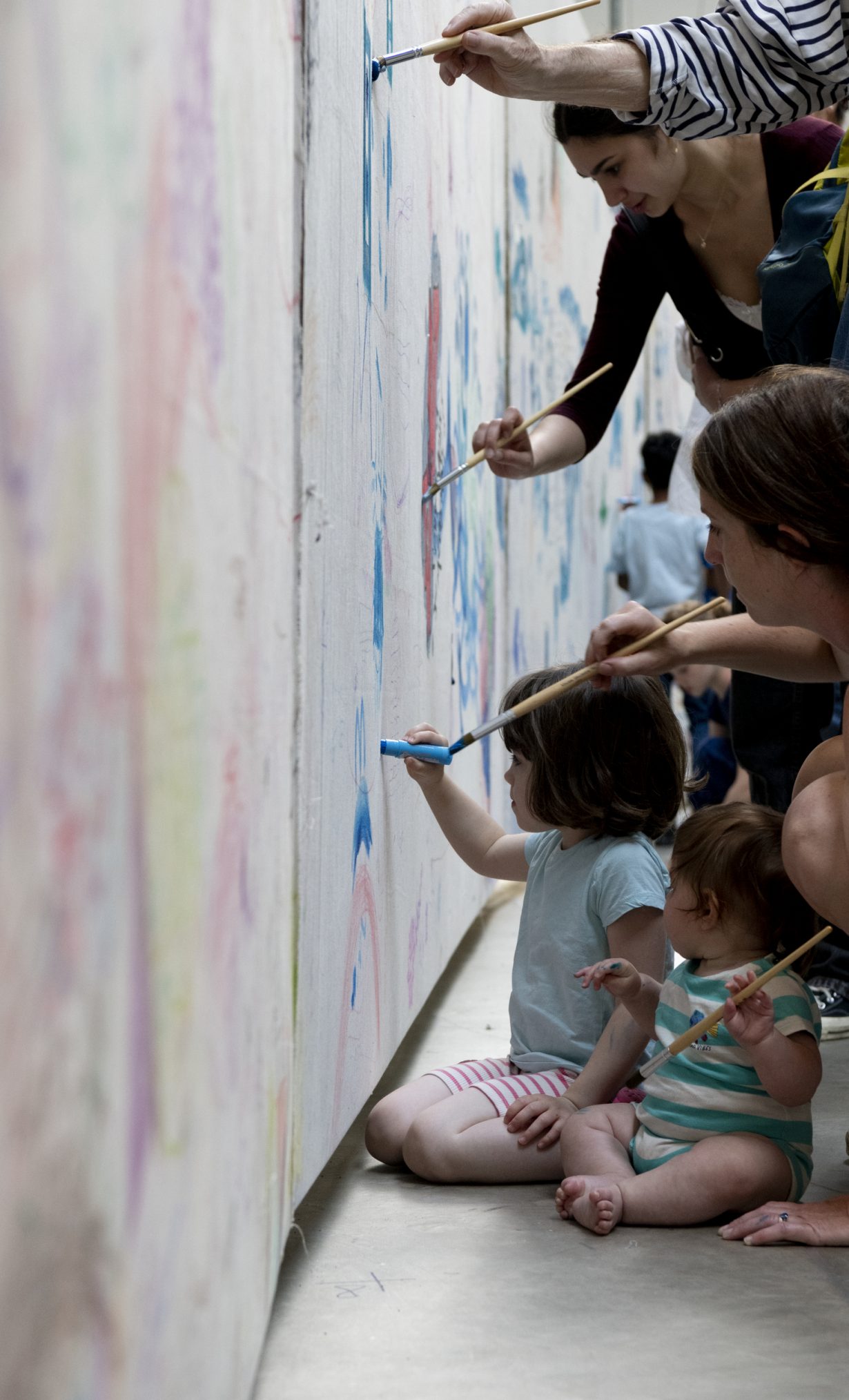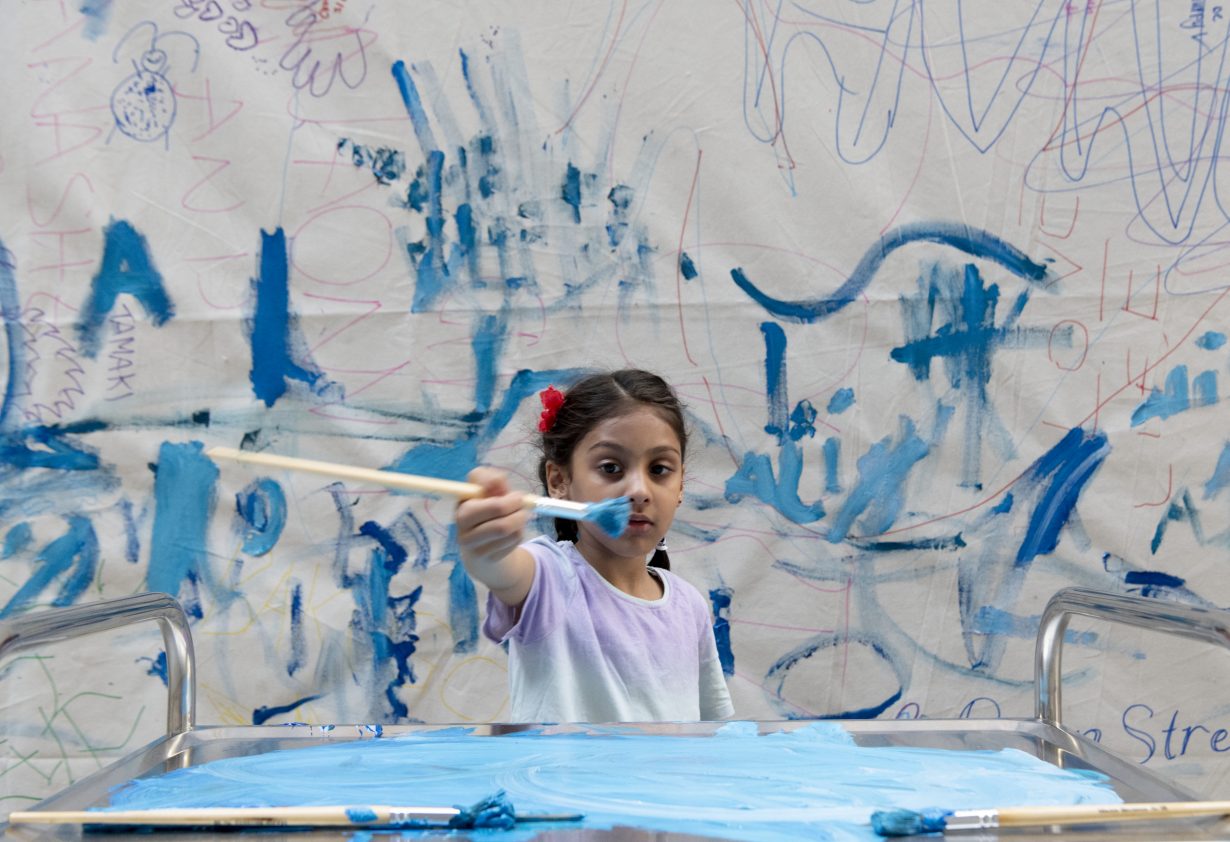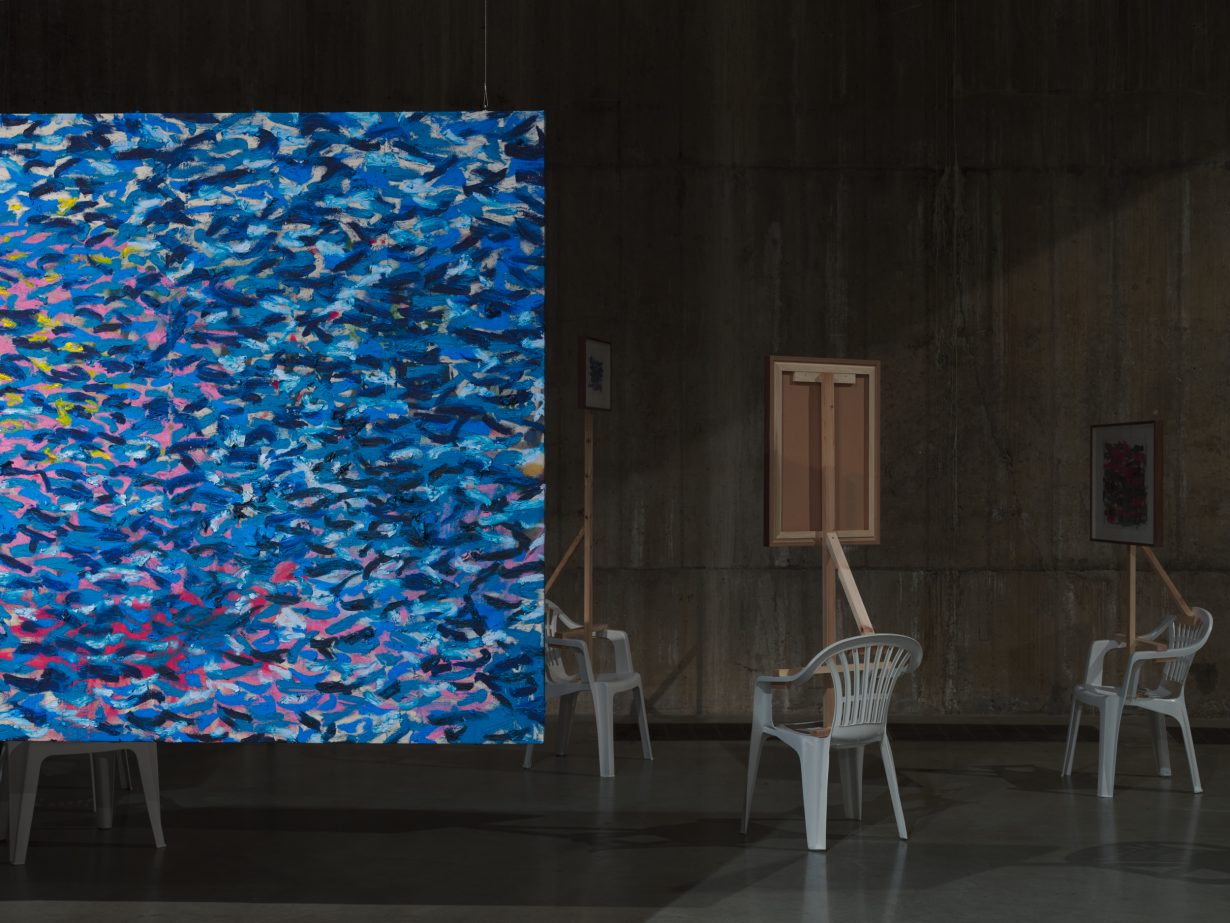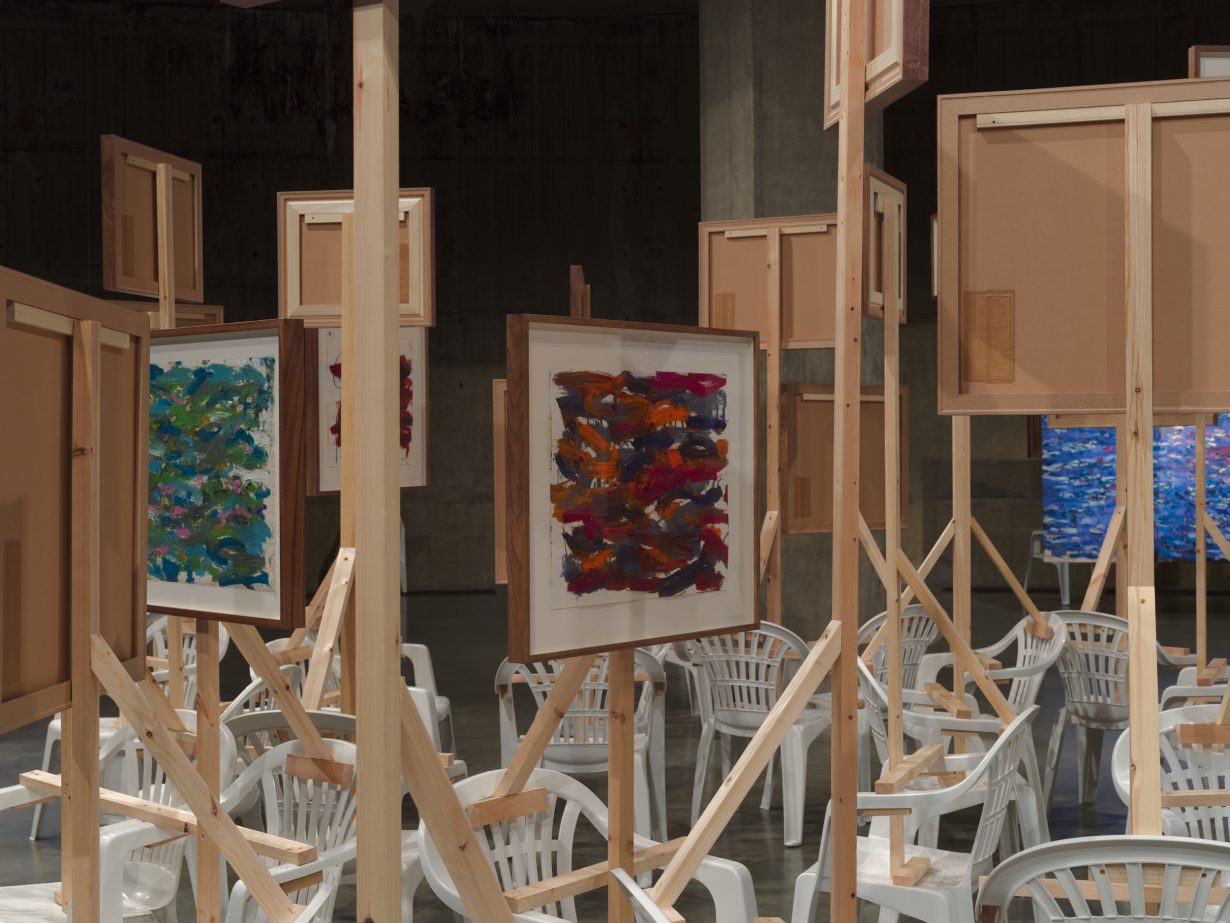The artist’s Tate Modern interactive installation is billed as art for all, but is that just a way of hiding the fact that it doesn’t have anything to say?
The first thing you learn when you become a parent is how to be bored. Truly, brain-breakingly bored. The second revelation is that parenting is in fact a competitive sport, with each new developmental milestone a reflection of just how far you’re willing to go in the race. Together, it’s a volatile combination enough to fuel a vast industry of ultra-colourful, hyper-engaged play sessions, each promising new and better learning experiences for your little darling to flourish. Museums have taken note and got in on the fun too, with toddler tours and sketch-alongs ideally placed to appeal to parents and carers desperate for guilt-free reasons to get out of the house with their squawking babies and squabbling kids. Since 2021, London’s Tate Modern has staged wholesome family-focused installations in its cavernous Turbine Hall each summer, from doodling in an ‘ever-changing artwork’ by artist Ei Arakawa (2021) to covering a white domestic apartment in multi-coloured dot stickers in Yayoi Kusama’s obliteration room (2022). It’s all part of UNIQLO Tate Play, a sponsored, free programme of participatory activities aimed at young people under the bland but dutiful ethos of ‘art is for all’.
This year it’s the turn of Oscar Murillo with The flooded garden, a Claude Monet-inspired interactive installation. Visitors are invited to ‘flood’ 500 square metres of raw canvas, mounted on five-metre-tall scaffolds, with watery hues of blue, pink and yellow artist-grade acrylic pigments, in a nod to the colour palette of the famous Nymphéas (Water Lilies), which the artist painted at home in his Giverny garden while gradually going blind. The curved, enclosed form is designed to echo the panoramic shape of the Water Lilies installation hung according to the artist’s plan in the Musée de l’Orangerie, Paris in 1927, a few months after his death, and described by critic André Masson in 1952 as ‘the Sistine Chapel of Impressionism’. Paintbrushes and unbranded tiny blue aprons are provided at Tate, which offer limited coverage but make for cute photos. It bears all the hallmarks of the previous iterations of the UNIQLO series and will undoubtedly bring the crowds during the dog days of summer.

So far, so uplifting. Yet it raises the question: where is Murillo in all this? Born in Colombia and raised in London since the age of ten, he previously worked as a cleaner and a teacher. In 2019 he was jointly awarded the Turner Prize, and has produced political, and at times uncomfortable work exploring migration, hidden labour and social inequalities. In A Mercantile Novel, Murillo’s first exhibition with David Zwirner in New York in 2014, he transposed a fully-operational production line from the Columbina factory in his hometown of La Paila into the moneyed environs of the Upper West Side, where workers manufactured thousands of chocolate-covered marshmallows to be given away for free. While for the ongoing project Frequencies, Murillo has so far sent raw sheets of canvas to more than 100,000 school children from around the world, asking them to place these on their desks and draw freely upon them; the results were first exhibited at the 56th Venice Biennale in 2015, and later at Murillo’s own London state school for an Artangel project in 2021. By comparison, asking young artists at Tate to unleash their inner Impressionist seems oddly flat, as if organised by a well-intentioned art teacher. It feels like a missed opportunity to inject something resembling radicalism into the gallery, whereby local and international visitors might have been challenged to consider their own privileges and prejudices stretching beyond the enclave of the museum, which happens to be situated in one of the most deprived boroughs in the UK. Instead we have an invitation to ‘dive into the joy of painting’ inspired by… Monet?

On the first afternoon a long queue of parents and impatient toddlers snakes back and forth in the Turbine Hall, suggesting less an exhibition opening than a fairground ride. Which, of course, is precisely the point. The canvas has already been emblazoned with hearts and smiley faces, robots and jellyfish, abstract circles and swoops, and scrawled with platitudes and streams of consciousness: ‘Live Laugh Love’; ‘Hope’; ‘I see the sea’; ‘Blue’; ‘Swim’. Young children run back and forth while parents attempt to offer some direction. A few teenagers skulk by a paint trolley, brushes in hand. My own one-year-old promptly tries to ingest a crayon while I distractedly admire the sheer scale of the doodled surface – less undulating watery vision, more a giant version of those sketchpads left out in stationery shops for shoppers to test their gel pens and highlighters on. In the adjacent Tate Tanks, Murillo’s own Surge (2019-24) paintings are on display, thick with oil stick blues and whites, coyly reinstating the hand of the artist amid the fray. One reviewer described these abstract works as ‘fussy’, but they seemed so perfectly cohesive that I was left wondering what friction there could be left to fuss about. It’s easy to glaze over as you look at them.

Murillo has long struggled to reconcile his sensational commercial success with the politics of his work. His paintings, often produced on the floor of his studio and layered with footprints and accumulated dirt alongside his characteristic mix of oil sticks, spray paint, found signage and wordplay, regularly sell for hundreds of thousands of dollars. He has (somewhat reductively) been called ‘the twenty-first-century Basquiat’ for his faux-naïve style, which (like Basquiat) appeal to a cloistered, moneyed world at odds with the marginalised communities with whom he simultaneously aligns his work. The flooded garden neatly unites these contradictions, from abstract painting to communal activation, but it also makes plain how one can be instrumentalised to feed the other. Them, a complementary exhibition at London’s Gagosian, is on view over the next month for those in the market to buy, featuring studies and works on paper smeared furiously with paint, ink, marker pens and crayons, and displayed on top of cheap plastic chairs in a direct echo of Murillo’s presentation of the Surge paintings at Tate. Described as an exploration of the ‘simple yet radical act of mark making’, one can assume that the association with the museum won’t hurt the prices.
Is The flooded garden merely surgical filler for these price tags; an exercise in institutional box-ticking; a haven for harried parents and their demanding offspring; a photo opp for the cultured classes? Murillo has previously railed against the instrumentalisation of culture in the UK under Tony Blair and New Labour, whereby artists and institutions were increasingly expected to demonstrate social accountability if they hoped to receive public money: ‘Our culture needed to have a purpose; it couldn’t be free for the sake of art.’ Organised by Tate’s learning department, and designed to bring in new, more diverse audiences, The flooded garden can hardly be described as diverging from this model.

What is more surprising is that the UNIQLO Tate Play programme is sponsored not by the state but by a private retail company, with funding for the next five years already confirmed, revealing a more entrenched attitude towards art with a conscience. A range of T-shirts featuring works by Alexander Calder and Bob and Roberta Smith is on sale at UNIQLO stores as part of the collaboration, in an apt metaphor for this ever-more familiar marriage of art, audience and commerce, in which galleries and museums must shape their programmes to appeal to the interests (and wallets) of large corporate sponsors. It is a blueprint we can expect to see more of in years to come. Public funding to cultural organisations in Britain (including Tate) fell by 30 percent last year, while the private fundraising income generated by these same organisations increased by 12 percent. The recent high-profile fallout over sponsorship of such institutions by investment firm Baillie Gifford and oil giant BP speaks to the ethical compromises and PR blows such deals can breed within the cultural sector, but even a benign benefactor like UNIQLO reveals the sway they can hold.
In an interview with the Guardian last year, Murillo discussed his previous experience of negotiating with Tate when he and his fellow nominees requested to share the Turner Prize collectively. ‘It was a win-win for everybody in the end, because the Tate was seen as progressive,’ he said. ‘But I think they are not progressive at all.’ In a decimated cultural landscape where risk-taking is not just discouraged but can lose an institution millions in funding, this is certainly true. When the same could be said of Murillo himself, what excuse is there?
